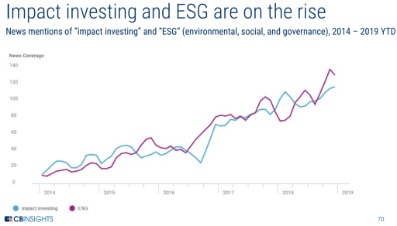How To Invest In S&p 500 Index
Table of Contents Heading
- $0 Online Equity Trade Commissions + Satisfaction Guarantee
- S&p Index Fund Companies
- Can You Buy Just One Sector Of Spy Stock?
- Portfolio Managers
- Access To Thousands Of Funds From Schwab And Other Providers
- Schwab Funds Monthly Distribution Schedule 2021
ETFs, which can only be purchased through a brokerage account, trade like stocks continuously throughout the day. When you buy or sell an ETF, you do so from another market participant, not the fund company. The other buyer or seller may be an individual investor like you—but is more often a firm that specializes in buying and selling ETFs .
It doesn’t require the research that investing in stocks with solid growth prospects demands. Investing in an S&P 500 fund (either a low-cost mutual fund or an ETF) guarantees that you’ll do as well as the stock market over time.
$0 Online Equity Trade Commissions + Satisfaction Guarantee
All information and ideas should be discussed in detail with your individual adviser prior to implementation. Advisory services are offered by Bonfanti Investment Services, LLC a Registered Investment Advisor in the States of Louisiana and Texas. Insurance products and services are offered through Bonfanti Insurance Services, LLC. Bonfanti Investment Services, LLC and Bonfanti Insurance Services, LLC are affiliated companies. Content should not be viewed as an offer to buy or sell any of the securities mentioned or as legal or tax advice. You should always consult an attorney or tax professional regarding your specific legal or tax situation.
In addition, since these funds are designed to track only the S&P 500, there is less management involved, and concurrently, lower fees. Vanguard funds are widely regarded as an easy entry point for new index fund investors, but you can find similar funds from other providers, as well. Index funds are quite tax-efficient compared with many other investments. For instance, index funds don’t have to do as much buying and selling of their holdings as actively managed funds, and so index funds avoid generating capital gains that can add to your tax bill. Index funds are usually far less costly than alternatives like actively managed funds.
S&p Index Fund Companies
SIPC. Neither Wealthfront Brokerage nor any of its affiliates are a bank, and Cash Account is not a checking or savings account. We convey funds to institutions accepting and maintaining deposits. In an ideal world, you would invest a large sum as early as possible. Unfortunately, this isn’t consistent with how most people earn (i.e. salary, vested company stock, bonuses) and you may need to work through some decisions before investing a large sum anyway. Moreover, investing all at once can make you sensitive to the timing of your investments if the markets correct soon thereafter. Diversifying across assets means investing in the stocks or bonds of many companies and issuers, not just a few.

The Information has not been submitted to, nor received approval from, the US SEC or any other regulatory body. Some funds may be based on or linked to MSCI indexes, and MSCI may be compensated based on the fund’s assets under management or other measures. MSCI has established an information barrier between equity index research and certain Information. None of the Information in and of itself can be used to determine which securities to buy or sell or when to buy or sell them. The Information is provided “as is” and the user of the Information assumes the entire risk of any use it may make or permit to be made of the Information.
Can You Buy Just One Sector Of Spy Stock?
“S&P 500 erases 2020 losses as investors bet on a swift economic recovery from the coronavirus”. “The S&P is up 9% this month, but these 10 stocks jumped more than 22%”. In 2005, the index transitioned to a public float-adjusted capitalization-weighting. Negative weightings may result from specific circumstances and/or the use of certain financial instruments, including derivatives, which may be used to gain or reduce market exposure and/or risk management.
- The less you’re able to invest, the more important it is to find a broker that offers you low costs, because that’s money that could otherwise go into your investments.
- The Capitalization-Weighted Index (cap-weighted index, CWI) is a type of stock market index in which each component of the index is weighted relative to its total market capitalization.
- Individual stocks, stock funds, and other assets are all compared against it.
- All content has been provided for informational or educational purposes only and is not intended to be and should not be construed as legal or tax advice and/or a legal opinion.
- As such, this index is considered a leading U.S. economic indicator.
- Since SPY stock owns all the stocks in the S&P 500, its holdings are an open book.
When evaluating fund performance, it is important to note that it does not represent actual performance of such share class. All performance after inception of the share class is actual performance. For details regarding which funds and share classes leverage synthetic, pre-inception performance, please visit this page. Carefully consider the Funds’ investment objectives, risk factors, and charges and expenses before investing. This and other information can be found in the Funds’ prospectuses or, if available, the summary prospectuses, which may be obtained by visiting the iShares Fund and BlackRock Fund prospectus pages.
Portfolio Managers
If you’re looking for some index fund ideas to help you invest better, the following four are a good place to start. Properly planning for retirement could be the most important investment decision of your life. ETFs are collections of stocks that trade just like a stock, bought and sold throughout the day with fluctuating prices. Owning shares of individual companies can be especially rewarding, but you’ll need to do some research. Depending on the index you choose, you can end up owning some stocks you’d rather not own, while missing out on others you’d prefer. Robo-advisors will invest and allocate your money appropriately based on your risk tolerance and goals, automating the investment process for you.
Created in 1957 by Standard & Poor, the S&P 500 Index is a measure that financial companies and banks use to measure the health of the U.S. stock market. Rather than picking individual stocks to invest in, investing in an index spreads out your investment across a range of stocks that mimic the index.
Investors in an index mutual fund or ETF participate in the growth of the market segment represented by the index, but markets don’t always rise. And when the market is in decline, “owning the market” means participating in the full decline. Market outperformance—which index investments cannot and do not aim for—isn’t just about maximizing gains; it’s also about minimizing losses during a downturn.
Other exceptions may also apply for certain investors with respect to minimum investment requirements. Expenses were lowered and investment minimums were removed across many funds to make investing accessible for every investor.
Because the mutual funds and ETFs track the performance of the S&P 500 Index, investing in these funds is a passive investment strategy that doesn’t require a hands-on touch. That’s why I always want an investment professional in my corner to help me separate the winners from the losers. It’salwaysa good idea to sit down with someone, like a SmartVestor Pro, who can help you set goals for your financial future and help you understand all your options, from index funds to growth stock mutual funds.
Access To Thousands Of Funds From Schwab And Other Providers
This calculator demonstrates how this investment strategy might work for you. The Commingled Pension Trust Funds of JPMorgan Chase Bank N.A. are collective trust funds established and maintained by JPMorgan Chase Bank, N.A. The funds are not required to file a prospectus or registration statement with the SEC, and accordingly, neither is available. The funds are available only to certain qualified retirement plans and governmental plans and is not offered to the general public. Units of the funds are not bank deposits and are not insured or guaranteed by any bank, government entity, the FDIC or any other type of deposit insurance.
Mutual funds are also collections of stocks, and they can be actively or passively managed. Index funds track their markets in good times and bad, and when the market plunges, your index fund will plunge as well. To buy shares in your chosen index fund, you can typically open an account directly with the mutual fund company that offers the fund. Alternatively, you can open a brokerage account with a broker that allows you to buy and sell shares of the index fund you’re interested in. The value of the mutual fund — called its net asset value — is based on the total value of the different securities that are in the fund, divided by the number of the fund’s outstanding shares.
But over time, the fees you pay can really add up, which is why low-cost index investing can leave more of your money invested for growth. Over time, returns lost to taxes add up.In this hypothetical example, $100,000 invested in an active equity fund would have lost over $6,700 more to taxes over 10 years compared to an index equity fund. Index mutual funds and ETFs tend to have lower turnover than actively managed funds—meaning they buy and sell securities less frequently—potentially generating fewer capital gains. Now you can get access to the entire US Broad Stock Market for an annual fee of .03%. That means that on a $10,000 investment, you would pay a fee of $3 a year to own about 2,000 stocks.

Requires both an active Acorns Spend account and an Acorns Investment account in good standing.Instant Round-ups are accrued instantly for investment during the next trading window. Taking a different 20-year span that also included three bull markets but only one bear market, the outcome is far different. Adjusting for inflation, $10,000 invested in January 1987 would have grown to $51,000. Likewise, the market roared back following the 2008 financial crisis to the longest bull run on record. Because past performance is no indication of future performance, no one can say whether the stock market will perform the same way in the next 20 years.
That means if you invest $25,000 in SPY stock, you will receive $400 a year, paid quarterly, on your investment. You don’t want to overpay for what should be one of your lowest cost and core holdings. That means if you invest $25,000, you’ll pay just $23.75 a year. Compare that to the $137.50 you’d pay a year if you owned the typical stock mutual fund that charges 0.55% annually. Another advantage of SPY stock is that it spreads your investment dollars across all 11 sectors. In just a single trade, you own tech stocks, consumer stocks, utilities and all the rest.
That kind of information is usually available in the fun’s prospectus, or through online financial sites. “Index fund fees often range from a low of about .05% [of a client’s invested assets] to 0.5%,” according to Ritter. So if you want to invest in the spectrum of the US stock market, and in effect the US economy, the S&P 500 is a good entry point. Although it’s limited to large-cap companies, the S&P 500 is diverse enough “to reflect all major sectors of the economy,” says Clark — from industrials to information tech to consumer goods to health care.

